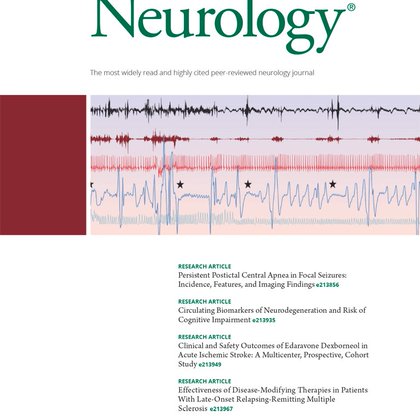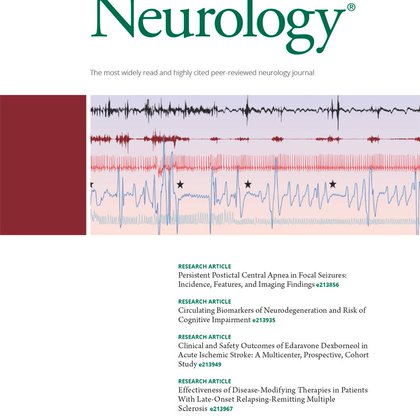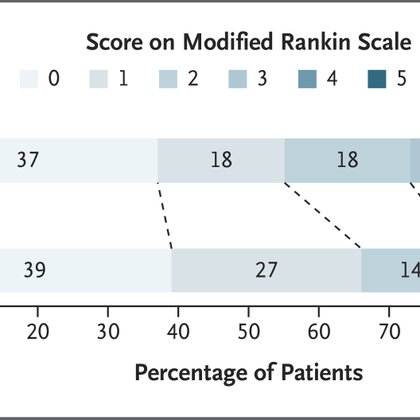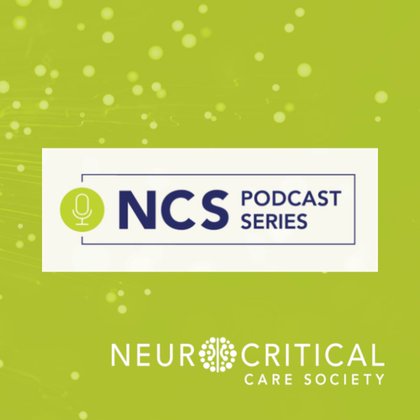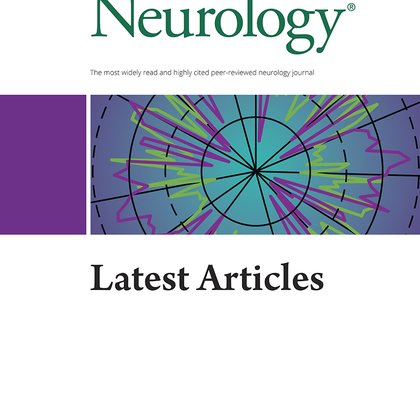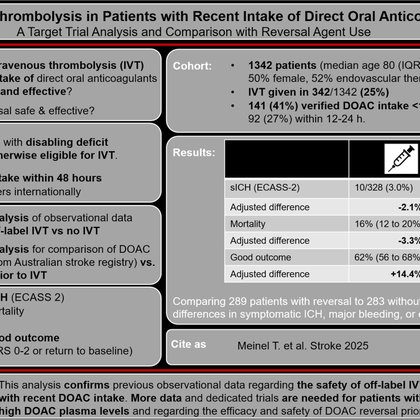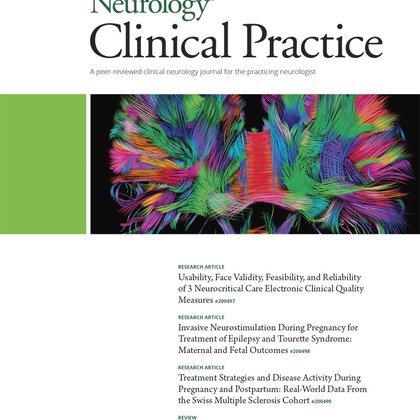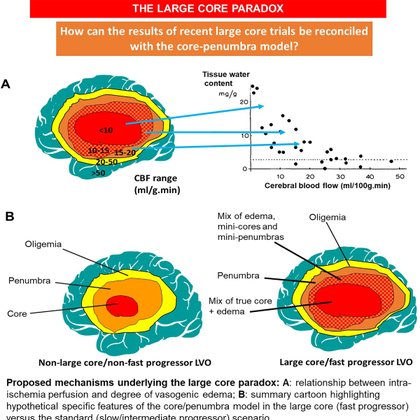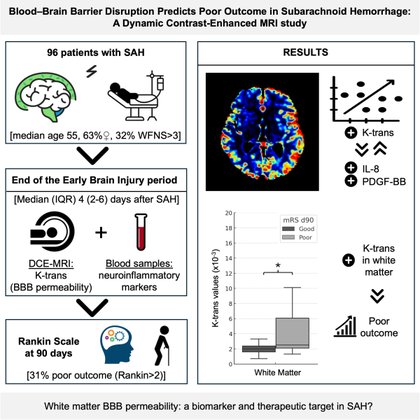
Stephan A Mayer
@stephanamayer
Followers
6K
Following
2K
Media
195
Statuses
3K
Neurointensivist. Researcher and academician. In love with innovation, creativity, and freedom.
New York, USA
Joined January 2010
1/ So now it's the cataclysmic TTM -2 trial, just published in @NEJM. How can a world changing trial like HACA published in 2002 now be effectively reversed almost 20 years later? I will explain.
nejm.org
Targeted temperature management is recommended for patients after cardiac arrest, but the supporting evidence is of low certainty. In an open-label trial with blinded assessment of outcomes, we ran...
16
196
571
Very cool study of cardiac arrest patients with status epilepticus. 9% good outcome overall. Predictors of good outcome:. No burst-suppression.Higher Sz discharge frequency (>2 Hz).Earlier Sz termination.Higher ASM doses.Higher discharge frequency.
neurology.org
Background and ObjectivesThe prognostic significance and the benefits of antiseizure treatment for definite and possible status epilepticus (SE) after cardiac arrest (CA) remain debated. The study...
3
20
39
The Upshot: When a patient with AF has a stroke on a DOAC, don’t switch to warfarin. The result will be a higher risk of recurrent stroke and ICH down the road . Anticoagulation Strategies Following Breakthrough Ischemic Stroke While on DOACs.
neurology.org
Background and ObjectivesThe management of anticoagulation after ischemic stroke while on direct oral anticoagulants (DOACs) is controversial. We performed an aggregate-data meta-analysis to compare...
3
48
120
Early Tirofiban Infusion after IV Thrombolysis for #AIS. This RCT of 400+ pts showed a ~10% absolute increase in good outcome compared to lytic therapy alone. A trial of 800-1000 pts might give us a new standard — GP 2B3A inhibition + lytics for AIS .
nejm.org
Intravenous thrombolysis remains a standard treatment for acute ischemic stroke within 4.5 hours after onset. Vascular reocclusion may occur after intravenous thrombolysis and may be preventable wi...
3
11
38
To learn more check out my MasterClass #NCS Podcast with her on the concept of brain protective ventilation.
podcasts.apple.com
Podcast Episode · Neurocritical Care Society Podcast · 04/21/2025 · 31m
0
1
4
A nice succinct review of how pCO2 manipulation can modulate ICP and CBF in #SABI by the Chiara Robba group .
link.springer.com
Intensive Care Medicine -
1
8
26
Fascinating study of the origins of #SUDEP. 70 pts with 400 Szs in the EMU. 16% of Szs had interictal apnea. In half of those (7% overall) there was post-ictal apnea, which lasted a mean of >2 minutes before organized breathing resumed. #curingcoma.
neurology.org
Background and ObjectivesPostconvulsive central apnea has emerged as a contributor to sudden unexplained death in epilepsy. The aim of this study was to evaluate the incidence and characteristics of...
0
10
21
Soon we will ALL be giving IV TNK to stroke patients on DOACS. The drumbeats are pounding. Here is yet another comparative effectiveness study showing lower ICH and better mRS outcomes among DOAC pts given lytics compared to those who did not.
ahajournals.org
BACKGROUND: Intravenous thrombolysis (IVT) in patients with recent ingestion of direct oral anticoagulants (DOACs) is a frequent challenge and remains controversial. The benefit of DOAC reversal...
5
36
87
Check out this comprehensive and authoritative review of Covert Consciousness by Daniel Zondziella in Current Neural Neuroscience Reports!. #curingcoma.
0
2
10
Asymptomatic Hemorrhagic Transformation After Thrombectomy .Is associated with substantially worse clinical outcomes.
neurology.org
Background and ObjectivesHemorrhagic transformation is a prevalent and serious complication that frequently occurs after endovascular recanalization in acute large vessel occlusion stroke. The impact...
1
15
37
in this large observation study 12% of pts with a ruptured AVM developed vasospasm. Three risk factors. 1. Younger age.2. Female.3. Intraventricular hemorrhage. This met analysis is primarily;y rep[resented by a paper by our group at @WMCHealth @nymedcollege.
0
2
12
The Large-Core Paradox explained here. How can MCA stroke patients presenting with large lucencies and low CBV regions benefit from thrombectomy? . Here’s a thoughtful review.
ahajournals.org
Recently, 6 randomized controlled trials of endovascular treatment (EVT) versus medical management in anterior circulation large vessel occlusion with large-core documented significant benefit of EVT...
0
16
39
An important feature of early brain injury after poor grade SAH is global cerebral edema. Dynamic Contrast–Enhanced MRI can quantify blood brain barrier disruption in this entity.
ahajournals.org
BACKGROUND: Spontaneous aneurysmal subarachnoid hemorrhage induces early blood-brain barrier permeability dysfunction, although its clinical relevance and underlying mechanisms remain poorly unders...
0
3
14
Nice review of the role of MMA embolization in the management of chronic subdural hematoma.
neurology.org
Purpose of ReviewWhile chronic subdural hematoma (cSDH) has been considered a neurosurgical disease, conventional management with surgical evacuation has been associated with high rates of disease...
0
8
23
This is fabulous. It takes over 1800 overnight vital sign assessments among Neurology floor inpatients to generate one clinical actionable finding. Let your patients sleep!.
neurology.org
Background and ObjectivesSleep is a critical component of health and recovery. Awakening sleeping patients for routine vital sign monitoring overnight is a common inpatient practice, but its benefits...
1
15
46
Greater Postthrombectomy contrast staining on CT calculated using the ASPECTS score correlates with worst functional outcome. Not a shocker, but this might be useful for prognostication.
ahajournals.org
BACKGROUND: As indications for and utilization of mechanical thrombectomy continue to expand, there has been an increasing focus on developing improved tools for functional outcome prediction. We aim...
0
3
10



